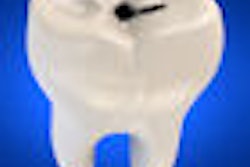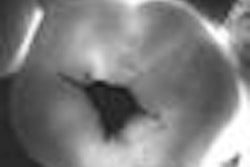Laser fluorescence (LF) detection of occlusal caries in primary molars is "significantly affected" by both clear and opaque sealants, according to a new study in
Lasers in Medical Science (January 23, 2010).
Researchers from the University of Athens School of Dental Medicine set out to investigate the effects of clear or opaque sealants on the LF readings for occlusal caries detection in primary molars.
"The application of a pit and fissure sealant has been recognized as the most effective method for the prevention of pit and fissure caries and for sealing questionable occlusal carious lesions as a part of the preventive strategies used in the management of incipient caries," they wrote. "Practitioners, however, are skeptical about sealing borderline incipient lesions, since visual inspection is difficult on sealed surfaces. They might, however, be more receptive to do so if the lesion's progression could be quantitatively monitored under the sealant, using adjunct diagnostic methods."
A dentist conducted clinical examinations of 427 occlusal sites in 199 teeth (in vitro). Their laser fluorescence was measured locally with the Diagnodent (KaVo Dental), both before and after the teeth had been sealed with Delton Clear LC or Delton Opaque LC (Dentsply).
For 29 of these teeth, the researchers also measured the laser fluorescence by scanning the fissures before and after sealant application. They then compared and correlated the LF readings before and after sealing using three different tests.
The results showed an LF increase by a mean of 6 units after sealing with the clear material, while a decrease of 15 units was measured after sealing with the opaque material. LF readings were statistically significantly affected by both clear and opaque sealants (p < 0.001). However, this effect was statistically significantly less pronounced for the clear material (p < 0.001). The researchers also found no difference between the LF readings taken by the fissure scanning technique or locally (p > 0.05).
"LF readings for occlusal caries detection in primary molars were significantly affected by both the clear and the opaque materials," the researchers concluded. "However, the effect for the opaque material was more pronounced."
Copyright © 2010 DrBicuspid.com



















